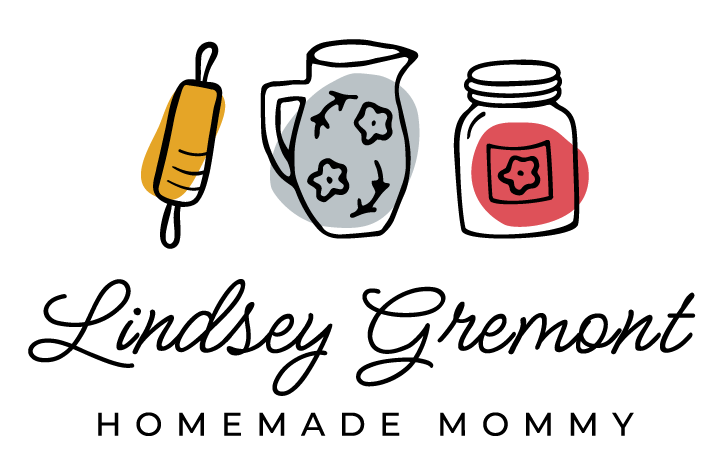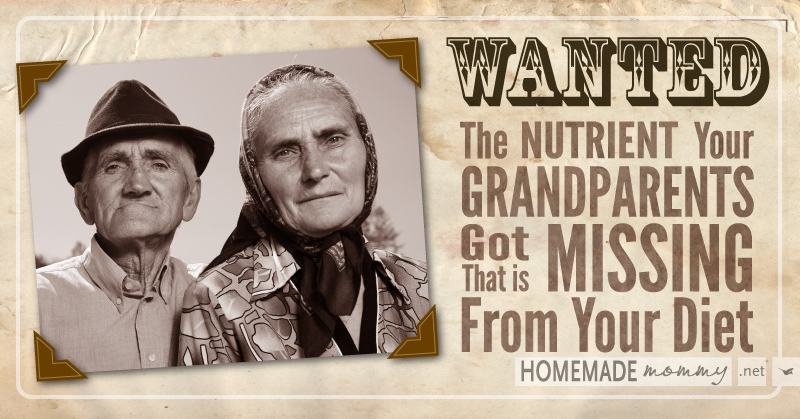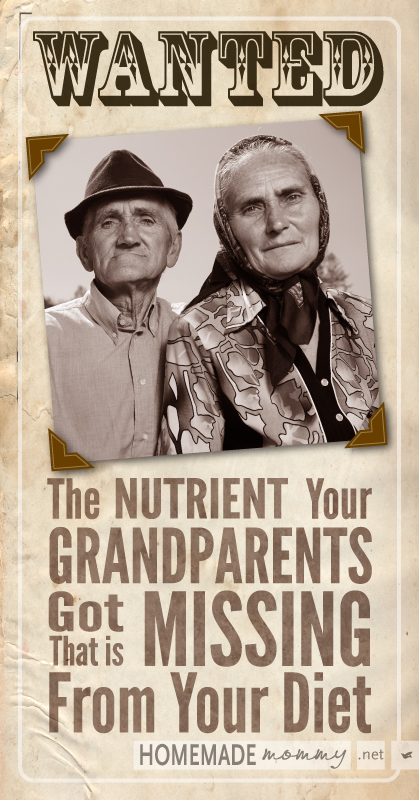The Nutrient Your Grandparents Got That is Missing From Your Diet
There is something important missing from our diets today that was very prevalent over 50 years ago. Our grandparents got this nutrient without even trying but, to get this nutrient today, we must seek out special dietary sources.
What is this missing nutrient? Vitamin K2.
Never heard of K2? Well then you must read on! I read about K2 a couple of years ago in a wonderfully informative book called Vitamin K2 and the Calcium Paradox: How a Little-Known Vitamin Could Save Your Lifeby Dr. Kate Rheaume-Bleue. This book opened my eyes to so many things, it is hard to choose how to distill the information for you here. If you want to hear Dr. Rheaume-Bleue speak, you can for FREE. Scroll down for details.
So what is K2 in a nutshell?
K2 is a fat soluble vitamin in the same family as Vitamins A, D, and E. It has a role to play in many aspects of our overall health including fertility and fetal development, cardiovascular health, and bone health.
Why is it so vital to our health?
First, while we need Vitamin D to absorb calcium, Vitamin D does not tell the calcium where to go in our bodies. This is where Vitamin K2 comes into play. K2 tells the calcium to go to our bones and make them strong. Without K2, calcium will take up residence wherever it can, usually in our soft tissues like arteries. This is exactly where we do not want calcium! We all know what calcium in the arteries is: plaque. If the calcium does not get into our bones, then we are left with brittle bones. So it really does not matter how much calcium we take, if we do not have K2, then we will not see the benefit.
The other issue with not having sufficient K2 during fetal development is that we experience premature calcification of our nasal cartilage (source). In English, this means that the face will not develop properly, which will lead to: crooked teeth, mouth breathing, and sinus issues. Sound familiar?
So back to the topic at hand…
Why did your grandparents have easy access to this vital vitamin and now we do not?
1. They Weren’t Afraid of Fat.
Our grandparents did not grow up on a low-fat diet. They ate plenty of fats. Just look at any cookbook prior to 1950 and you will see just how much more fat they ate than we do. I have seen many an old recipe for roasts layered with suet (fat) to keep them moist! Now we all shudder at a photo of a chicken wrapped in bacon! K2 is a fat soluble vitamin and is present in the fat. When we remove the fat, we remove the K2.
2. They ate meat, milk, butter, cheese, and eggs from grass fed animals.
K2 is only present in grass fed animal products, not grain fed. As we moved animals off of pasture to confinement and grain feeding, we lost an important source of K2. 99% of all land animals eaten or used to produce milk and eggs in the United States are now factory farmed. So unless you seek out grass fed animal products, you are missing a vital K2 source.
3. They ate liver weekly.
Liver is very high in K2 and our grandparents (or great-grandparents) ate this weekly. Liver is now out of vogue and is repugnant to most people. We are told it is not healthy to eat liver and that it contains toxins and too much Vitamin A. I would agree if you are eating factory farmed liver, however, liver from grass-fed and sustainably raised animals contains a very nice balance of Vitamin A and K2!
4. They ate fermented foods.
There are specific strains of bacteria that product the vitamin K2 in some fermented foods. Specific cheeses like Gouda or Brie for example, even from dairy which is not grass fed, will contain some vitamin K2. Sauerkraut contains some K2 as well. Actually, the highest concentration of K2 found in any food is actually in a fermented soybean product called natto, traditionally eaten in Japan.
More K2 Resources
- Get the book Vitamin K2 and the Calcium Paradox: How a Little-Known Vitamin Could Save Your Life.
- Learn more about Dr. Kate here.
Where to buy Vitamin K2 rich foods
- You can get K2 along with D3 and A and E and many other vital trace minerals + turmeric in the new Young Living Master Formula Advanced Multinutrient Complex Vitamin. You can learn more about how to get started with Young Living here.
- Pick up some high vitamin butter oil – a great source of K2.
- Purchase natto spores for making natto at home.
- Purchase cultures and starters for making vitamin K2-rich cheese at home.
- Get some Gouda cheese – I buy mine locally!
- Enjoy grass fed ghee.
- Love your grass fed butter like Kerrygold or Organic Valley, both are widely available in most regular grocery stores.
- Find a source of grass fed raw milk and cream for your butter and cheese.



Fascinating. I’ve heard of the vitamin, but some of the sources are new to me – and especially important because I eat no animal products!
Do we have any research studies on this. Old nutritional journals? Would be nice to double check this. I knew of plenty of old folks growing up (I am 61) who had brittle bones. I do believe we have a modern plague effecting many, especially women.
Thanks
Bruce
Yes–this: http://amzn.to/1cNqA1T
That’s not an objective peer-reviewed source.
How is it not objective? It is the original writings of one of the discoverers of K2, and documents his research for the lay audience. He also published peer-reviewed scientific articles, but they are not available online. Perhaps the Price Pottenger Foundation would provide more information if you feel that only the peer reviewed papers are worth while. However, I would encourage you to read the book before dismissing it.
Last year my doctor said I had low vitamin D levels and said needed to start on a vit D supplement. Luckily the man at my vitamin store told me about vit K2!! But i didn’t research all the reasons. Thanks for all the info!!
Amen!! I have always had low vitamin D levels even though I supplemented. I learned about Vitamin K2 and the ONLY difference in what I did was add the Vitamin K2 to my regiment. Next time I got my vitamin D levels tested, my results were a 96 (too high!) so I know that my levels went from around 35 to 96 because of the K2. I now don’t take Vitamin D3 every day. Maybe every other day. And, I don’t take K2 every day, either. I do eat foods that have K2 in them, though… fermented dairy, grassfed beef, grassfed butter, etc.
I am a believer.
Every single time the doctor has told me to start taking calcium supplements I ended up with kidney stones. This makes me think I’m getting enough calcium, but not enough K2.
My urologist told me to continue to take calcium in spite of the kidney stones. He said it is easier to remove or break up a kidney stone than it is to treat brittle bones or degenerative bone disease.
OMG Cray Cray!
Dr. Weston A. Price knew from his observations of people around the world that there was “something” almost miraculous about the butter oil from cows eating spring grass. He called it the “X” Factor, and scientists today believe it is Vitamin K-2. He used two foods, the butter oil and cod liver oil, and just these two nutrients would raise people off their deathbeds. We really don’t have a calcium shortage in this country; we have an absorption problem, and the Vit K-2 is the missing element. Excellent article, well done!
Great informative article! Thanks for posting it!
I wanted to look for more info on vitamin K2 so I did a wikipedia search. They agree that fermented foods are high but say that meat is low in it. “Natural K2 is also found in bacterial fermented foods, like mature cheeses and curd. The MK-4 form of K2 is often found in relatively small quantities in meat and eggs. The richest source of Natural K2 is the traditional Japanese dish natto[23] made of fermented soybeans, which provides an unusually rich source of Natural K2 as long-chain MK-7: its consumption in Japan has been linked to significant improvement in K vitamin’s status and bone health in many studies.” They do provide some interesting information and studies. http://en.wikipedia.org/wiki/Vitamin_K2
They are looking at grain fed products, which have lower levels. The amount of K2 present in animal products is in direct proportion to how much greenstuffs they eat, and reaches the highest levels when cows are exclusively fed grasses in a state of rapid growth.
I like the article but where are your sources for what our grandparents ate?
my grand parents etc where farmers in Ireland
I have a decent level of certainty what they ate – and those who came before them
so many health problems we see now were not common among them or their neighbors
Hi,I just got kefir grains and read they have K2, do you know if they do?
Yes – the fermentation process creates K2 in kefir. read more about that here: http://www.homemademommy.net/2013/02/super-k2-smoothie.html
This is an interesting article. I am wondering if you have any information on whether this nutrient should be taken if someone has a blood clotting disorder? I have one and the numbers I was told up from 3-5% of the population has a blood clotting disorder (It’s not often found for men as easily since women often have problems in pregnancy making the clotting disorder obvious. We are told vitamin k is not your friend when you have a blood clotting disorder since we already clot too easily, do you have any thoughts on this?
K1 and K2 are not the same. K1 is for blood clotting. K2 has nothing to do with that.
Thank you!! That’s really good to learn the difference! I wish doctors knew more about this to advise more accurately which vitamin k to avoid and which is essential for our bodies. Is the vitamin k shot babies are given after birth vitamin K1?
Yes–K1 for the shot. Not K2.
You are fine taking K2. K1 is the one you want to worry about.
I remember taking cod liver oil as a child – yuk! now we have encapsulated the oil and swallow it that way. I think I could start taking it now. I do eat butter from grass fed dairy cattle. Is that enough? how much butter would I have to eat in order to satisfy the requirements?
I always love the advice to eat grass fed meat and eggs from pastured chickens. The only thing wrong with this advice is it usually comes from people that can afford it. Families have a difficult enough time just living so why not give some other alternatives? The other issue is availability. When people live in the center of farming country you will have a difficult time even finding cattle that are grass fed. The only one in my area charges so much for on the hoof beef it is out of reach for most people.